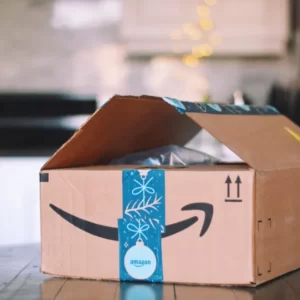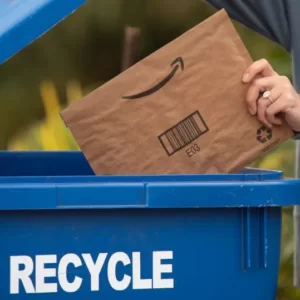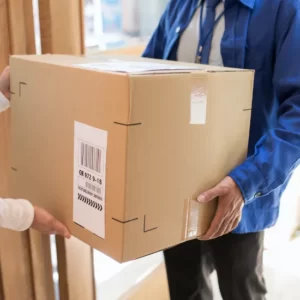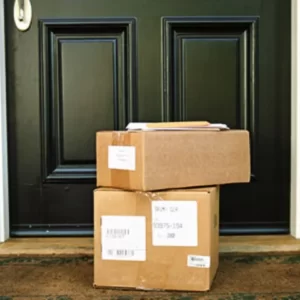Do you know what does in transit mean for a package? “In transit” means that your package is on its way to its final destination. Your package may not actually be in a moving vehicle like a truck or an airplane.
To accurately evaluate the delivery, it is essential to understand what the status updates mean. “In Transit” is a shipment status commonly used by the postal service, shipment companies, and retailers like Amazon.
Keep reading and find out more!
Table of Contents
What Does in Transit Mean?
When something is in transit, it is being moved from one location to another.
According to Collins Dictionary, if someone or something is in transit, it means that they are moving from one location to another.
In logistics, the term “in transit” describes the movement of a package from one place (e.g., warehouse, distribution center) to the final destination address, for instance, a customer’s home address.
Usually, carriers, the postal service, and merchants provide this status to inform customers of the state of the package and the stage in which the shipment is (i.e., in transit).
One of the downsides is that all status updates are based on scan activity. Only when a vehicle arrives, departs, or is processed at one of the carriers’ facilities do they update the status.
This often means days on end without any updates for customers but also for customer support representatives trying to answer two of the most dreaded questions, “Where is my order?” and “What does “in transit” mean in relation to your package?“
How Long Does It Take If Your Package is in Transit?
It is crucial to remember that the estimated delivery time is just that—an estimation. It is an average determined by how long it typically takes a particular courier service to deliver a package to its destination.

The distance and type of service that you have ordered will affect the estimated delivery time.
- Specific transit times cannot be predicted if you have scheduled a standard shipping service.
- Depending on the location, volume, and type of the freight or express shipment that you have ordered, you will receive a specific delivery time.
Why Do Packages Get Stuck in Transit?
When a package takes longer than expected to arrive at its destination, a number of factors are at play. In addition to the actual travel time between two points, there may be delays caused by traffic, route changes, or a high volume of orders that requires longer processing times.
Among the most common reasons for delays, we have the following:
Customs And Border Protection Delays
Packages often have to go through customs clearance processes to make sure shipments meet export or import customs regulations. Delays are normally caused by missing or incomplete documentation.
In this regard, authorities in charge of these operations must ensure safety and require all information prior to moving forward, so make sure you prepare ahead of time and give them any paperwork they may require.
Delivery Exception Delays
There are some things we cannot entirely predict or avoid, such as the weather or traffic conditions. Retailers have little to no control over these factors, so the best they can do is to proactively notify customers before they reach out to their support team.
On the other hand, packages frequently have inaccurate or incomplete information written on them. This can be avoided up to a certain extent by clearly explaining what fields need to be filled in, etc., before shipping them out.
Exceeded Package Dimensions
If you want to make sure there aren’t any delays caused by exceeding package dimensions, you can split your shipment into multiple packages. To avoid any confusion brought on by partial shipments, both your team and your customers can track each package separately at all times using an advanced order tracking tool.
This way, splitting shipments before sending them out with a courier company will give you a competitive edge, helping you cut down the processing time and reduce the number of “stuck in transit” situations.
Also Read: Why Is My Shein Package Stuck In Shipped?
What Do I Do If My Package is Stuck in Transit?
Speaking with the people assisting your package on its journey is essential if it appears to be stuck in transit.
It is a good idea to call the courier or shipping company to inquire about the whereabouts or status of your package to ensure that everything is proceeding according to plan during the shipping process.
Calling your neighborhood post office might be all it takes to find a solution. They should be able to address your concerns or at least point you in the right direction for assistance.
Most of the time, there is a logical justification for the delay in your package.
Your package may have simply been overlooked or incorrectly labeled by the courier facility staff, which is easily fixed by giving them a call and asking them to search the facility for your package.
It is also worthwhile getting in touch with the shipper or seller to inquire about the anticipated delivery date. If you need details about the class that they sent the package out with, they might be able to provide it for you.
You should get in touch with the sender if you are unable to track your package directly due to a lack of a tracking number so they can give it to you.
Simply ask them to track the package for you if you prefer.
What Are the Differences Between “in Transit” and “Out for Delivery”?
There are clear differences between “in transit” and “out for delivery” tracking statuses.
“In transit” meaning that your package is on its way to the recipient’s address. However, this doesn’t necessarily mean that your package is in a moving delivery truck or ship— it can be in any of the courier company’s depots waiting for the next scan.
On the other hand, “out for delivery” is normally the last step of the delivery process. It’s generally the last-mile delivery status update generated at the final processing facility or local post office before the delivery vehicle reaches the recipient’s address.
Why Do You Need to Be Clear About Order Status Updates?
Truth be told, it’s a little too late to create a premium post-purchase experience if the customer reaches out to you first.
If they’re contacting your customer care reps, it’s usually because they’re experiencing an issue regarding their order.
Moreover, consumers tend to link the shipping experience to the brand itself, and this can do more harm than good if you’re not carefully planning out the post-purchase experience.
The best way to increase customer satisfaction is to keep your online shoppers updated regarding their orders.
You need to set clear expectations, communicate throughout the entire journey, and make sure there won’t be any unpleasant surprises before (and after) the product arrives at its final destination.
Read More: Why Was My Package Intercepted?
FAQs
Does in Transit Mean Out for Delivery?
“In transit” meaning that your package is on its way to the recipient’s address. Your package could be in any of the depots run by the courier service, awaiting the next scan, and this doesn’t necessarily mean that it is in a moving delivery truck or ship.
Should I Be Worried If My Package is in Transit?
Usually, there is no need to worry, as your parcel will most likely still arrive on time.
Conclusions
Because of the popularity of online shopping, it is important for merchants to be able to quickly deliver packages and track and manage all orders in one place. It’s also essential for customers to be able to track the status of their orders at all times.
However, basic order tracking frequently necessitates a lot of manual input. Even the best of us are capable of making unintentional human error as a result of this. It’s important for your customer support team to see all orders under one roof, not having to manually insert the tracking number on a 3rd-party carrier website.
Offering order tracking is also of little use unless it is user-friendly, clear to understand, and provides information in real time.
Also Read:





